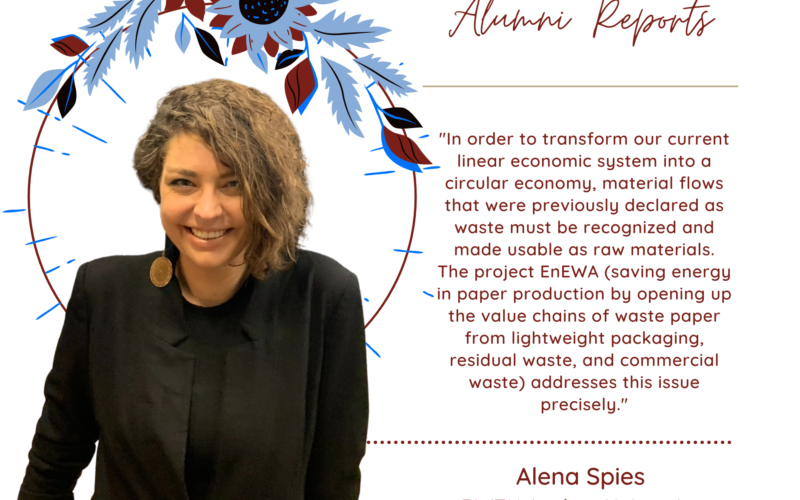The IGCS Winter and Summer schools have open platforms for our participants to engage in peer learning. During our Student Mini-Lecture series, selected participants present their research project, area of expertise and recent findings.
Alena Spies (RWTH Aachen University) proves a testimonial from their presentation during the Student Mini-Lecture series:
In order to transform our current linear economic system into a circular economy, material flows that were previously declared as waste must be recognized and made usable as raw materials. The project EnEWA (saving energy in paper production by opening up the value chains of waste paper from lightweight packaging, residual waste, and commercial waste) addresses this issue precisely. Paper from mixed waste streams is currently mainly used for energy recovery.

The main reason why the paper is not used for material recovery is its contamination. The Chair of Anthropogenic Material Cycles (ANTS) at RWTH Aachen University is researching a solution. Project partners are the Chair of International Production Engineering and Management (IPEM) at the University of Siegen and the industrial partners Tomra Sorting GmbH, STADLER Anlagenbau GmbH and PROPAKMA GmbH as well as the paper producer LEIPA Group GmbH. The project EnEWA is dealing with the collection and the recovery of paper from mixed waste streams as well as the processes for recycling the paper fibers. Following an analysis of the recovered paper grades and paper composites, the necessary sorting technology will be developed and adapted. Subsequently, a process for the hygenization and preparation of the paper fibers will be designed. The application-oriented research helps to optimize the recycling of paper and gives an essential contribution to closing the loops in terms of a circular economy. The material characterization is essential for the development of all further process steps and therefore the necessary first step. The first results of the characterization of paper from lightweight packaging waste show that more than 45 % of the wastepaper could have disposed of in a separate paper collection system.

